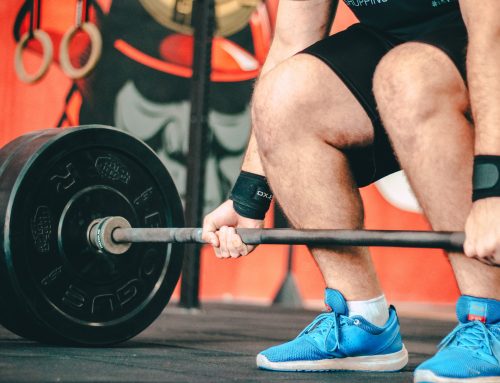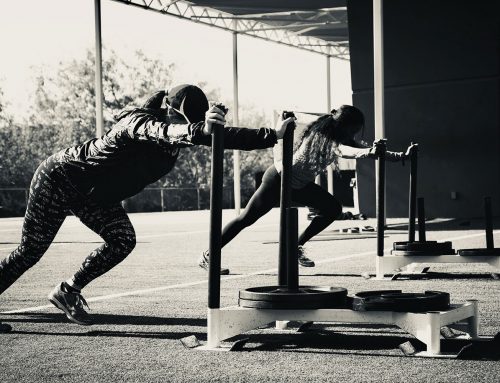There was this stand-up comedian that used to have a segment in his act called, “I don’t have any facts, I just know it is true.” (I may not have gotten the wording exactly right). The segment
was always about observed behaviors and gut feelings about something that took us to an obvious conclusion that just felt like truth even though it may have just been silliness. In every comedy routine, there is a nugget of truth and that is what makes it funny. The nugget in this segment was that we all have experiences like this where we don’t have facts to back up what we feel, but we just know it to be true. Well, that’s what is coming your way now. I have very few facts to back up the ideas about what I call, Emotional Boot Camp, but I just know they will resonate with you.
Emotional Boot Camp?
Yes, emotional boot camp. The idea that we need to exercise, strengthen and stretch our emotional bodies.
When can you sign up?
You did when you were born
How do you get involved?
You already are
How long is the boot camp?
Your entire lifetime
Who is the instructor?
You are, and all the people you come in contact with
What do I get out of it?
The ability to deal with any situation that comes your way
At some point when we were young, most of us were taught to control or repress our emotions. Pick your phrase, “big boys don’t cry”, “I’ll give you something to cry about”, “stop being a baby”, “suck it up”, or the British “keep a stiff upper lip”, and there are probably dozens more. Why were we expected to shut down our painful emotions? We were encouraged to be happy. But truthfully, not too happy. Too happy was seen as being frivolous, flighty, not taking things seriously. We needed to stay in the “safe zone” of emotions; not sad enough to cry, but just happy enough to the point of not making other people around us uncomfortable.
Why the need for the narrow channel of acceptable emotional expression? Because we are emotionally repressed. Yep, it is a vicious cycle. We teach emotional repression because we are uncomfortable with expressed emotion because we have no experience with expressed emotions because of our emotional repression when we were young. How twisted is that! I bet there is a really complex psychology term for it.
If you’re done living in the emotional safe zone, then join me in the SupawesomeLife Emotional Boot Camp. To get started, think of your emotions as if they were your muscles. All the same principles can be applied:
Stretching:
Pushing to your full range of motion will keep you lithe and give you the ability to extend beyond your comfort without getting hurt. The more you stretch, the further you can go. In the same way, we need to stretch the emotions we are used to dealing with. We have to experience our sadness and our happiness to their fullest. It is healthier to sob uncontrollably and laugh manically than to hold either of them in. By reaching to these full emotional limits, we increase our capacity to constantly feel more and experience more. Here is a side benefit; by being able to experience a wide range of our own emotions, we’re able to help others experience theirs without being afraid of them. For example, if you’re very flexible physically, you’re able to help others stretch because you know what the furthest stretch feels like.
Strength Training:
We lift weights to build muscle. If you always stay at the same weight or don’t use weight at all, you will not be able to handle heavier loads. In strength training, we call it Progressive Overload. Each time we get comfortable with a weight and are not challenged by it as much, we add more weight. This keeps the muscles continually growing, breaking down, rebuilding bigger and stronger.
There are times when we “de-load” our workouts or use less weight for a short time. This allows the muscles to take a short rest, fully heal, get stronger and be ready to jump back in heavier than before. When we push ourselves through challenging emotional situations, we learn how much we can handle. We know what it feels like and how to deal with it safely. However, just like with physical strength training, we do need to take breaks from heavy emotional lifting. Our minds and hearts need the space to process what we recently experienced and digest it. In parallel, it’s also good to take a break from strength training when you’ve had a big physical push.
Pain can be good
This is where all the classic workout phrases come into play, “no pain, no gain”, “feel the burn”, “the pain means it is working”, “push through the pain”, “eye of the tiger” (well, maybe not that
one). The pain you get when working out is actually the muscles being torn apart. Sounds terrible, but they have to be torn apart to rebuild themselves stronger. The soreness the day after a hard workout is due to lactic acid build up in the muscles. Lactic acid is a product of the muscle proteins being broken down. We all know the soreness hurts, is uncomfortable, and can be excruciating. We also know that it will pass and we will be stronger after it passes. However, the pain is so intense that we try to avoid it in the future. The memory of the pain is stronger than the memory of the benefits.
We tend to make bad choices when our decisions are based on avoidance instead of desire. Try this out, “I want to get physically stronger, so I will expect some muscle pain and soreness” as opposed to “I don’t want to feel pain or be sore, so I’m not going to work out.” In the emotional realm, this translates into “I don’t want to get hurt, so I won’t let anyone get close to me” instead of “I want to experience true love and happiness, so I will put myself out there and open myself up to getting hurt.”
Catabolic Effect:
Catabolism is the breaking down of large molecules into smaller ones that the body can use. This happens constantly in the body. It is not only the breaking down of food into nutrient components that can be used, but it is also the breaking down of muscle to re-use the smaller parts as building blocks or energy. The opposite of catabolism is anabolism. Anabolism is the building process: taking smaller molecules and combining them into bigger ones. This is the process that is used in building muscles. You can’t stop catabolism or anabolism, but you can be in a state where one is happening more than the other.
Anabolism is promoted by taking in healthy nutrients. It can be most effective when the nutrients are consumed at specific times when the body really needs them.
Here comes the big analogy
Just like with muscle catabolism and anabolism you are constantly breaking down emotionally and building up emotionally. It can’t be stopped no matter what you do . However, you can control whether you are in a state of emotional break down or emotional building. The building block nutrient for muscle anabolism is protein. The building block nutrient for emotional anabolism is love. The more love you allow in and the more you give to others, the stronger you will be emotionally. You especially need to take in love right after a hard emotional workout same as protein after a physical workout.
People often ask me, “how much protein should I take in?” The standard that the body needs is currently thought to be a 1/2 gram per lb. of body weight. With the SL Emotional Boot Camp, the question I really want people to ask me is “how much love do I need to take in and give out?” So I can tell them there is no limit to love, but you might find you need to increase your capacity for it.
In Conclusion,
I encourage you to exercise your emotional self and don’t be afraid of a little pain. There are so many benefits to going through the discomfort like increased peace, joy and fulfillment. During your emotional workouts, remember to feed your emotional body the nutrient it needs most, Love.







Leave A Comment